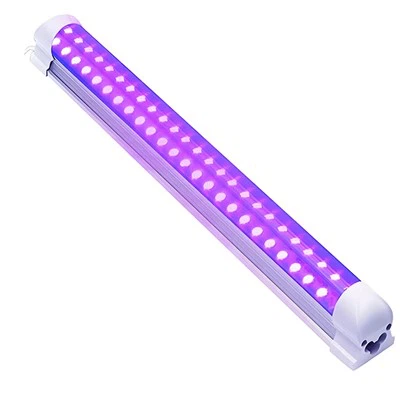What is color rendering index (CRI)?
The color rendering index of a light source refers to the parameter of the light source's ability to restore the color of an object. It is mainly used to define the difference in color properties of LED light sources. The score of this index ranges from 0 to 100.
To put it simply: color rendering is an important aspect for evaluating lighting quality, and color rendering index is an important method for evaluating the color rendering of light sources. It is an important parameter for measuring the color characteristics of artificial light sources. The higher the color rendering index, the better the color rendering of the light source. The better the color, the stronger the color restoration ability of the object.
The International Commission on Illumination (CIE) defines color rendering as: the effect of a light source on the color appearance of an object compared with a standard reference light source.
General color rendering index: The larger Ra, the better the color rendering performance; on the contrary, the worse the color rendering performance. The color rendering index of sunlight is defined as 100.
Although the "color rendering index" does not represent everything about a lamp. But "high CRI" can largely determine the effect of lighting - high color reproduction.
As shown in the figure below: a light source with a CRI (Ra) >90 has a stronger presentation of the natural primary color of an object than a light source with a CRI (Ra) <80, making it more visually comfortable.

The International Commission on Illumination (CIE) sets the color rendering index of sunlight as 100 and stipulates 15 test colors, using R1-R15 to represent the display index of these 15 colors respectively. When comparing a light source to a specified reference light source, an index value of 100 is best. BENWEI company can reach CRI 99 now

Ra usually refers to the average value of the eight natural color restoration levels of R1-R8 by the light source. R9-R15 is not included in the calculation. However, when evaluating the light source CRI from a professional perspective, the parameters of R9 (reduction of red) and R15 (performance of Asian skin tones) should be considered.

Since LED lamps use blue chips to excite yellow phosphor to produce white light, it is extremely lacking in the red band, resulting in LED lamps having no red display capability. When we choose LED lamps, we must not only look at the color rendering index Ra, but also the values of R9 and R15. Generally, the display indicators of lamps are recommended to be Ra>90 (R9>50, R15>90).
![]()
The difference between color rendering index:
90-100 Places that require precise color contrast, such as museum lighting;
80-89 Places where correct color judgment is required;
60-79 Places requiring medium color rendering;
40-59 Places with low requirements on color rendering and small color difference;
20-39 Places where there are no specific requirements for color rendering.
In home lighting design, to create a healthy and good atmosphere, the correct selection of light sources and lamps is particularly important. In order to make people's complexion better and the colors of food and fruits be more realistic in daily life, when choosing lamps, the higher the CRI, the better, that is, the RA value (R9, R15) must be high.
The national standard stipulates that the color rendering index RA of indoor lighting fixtures is at least 80. However, Luo Hualu, lighting designer of Mizhi Space, pointed out that from the principle of healthy light use, we require that the CRI RA be greater than 90 when designing lighting and matching products. The best light is natural light, whose color rendering index is defined as 100. Currently, the best lamps in the world can only be infinitely close to 100. BENWEI Company can reach 95 , R9>90, R12>90






